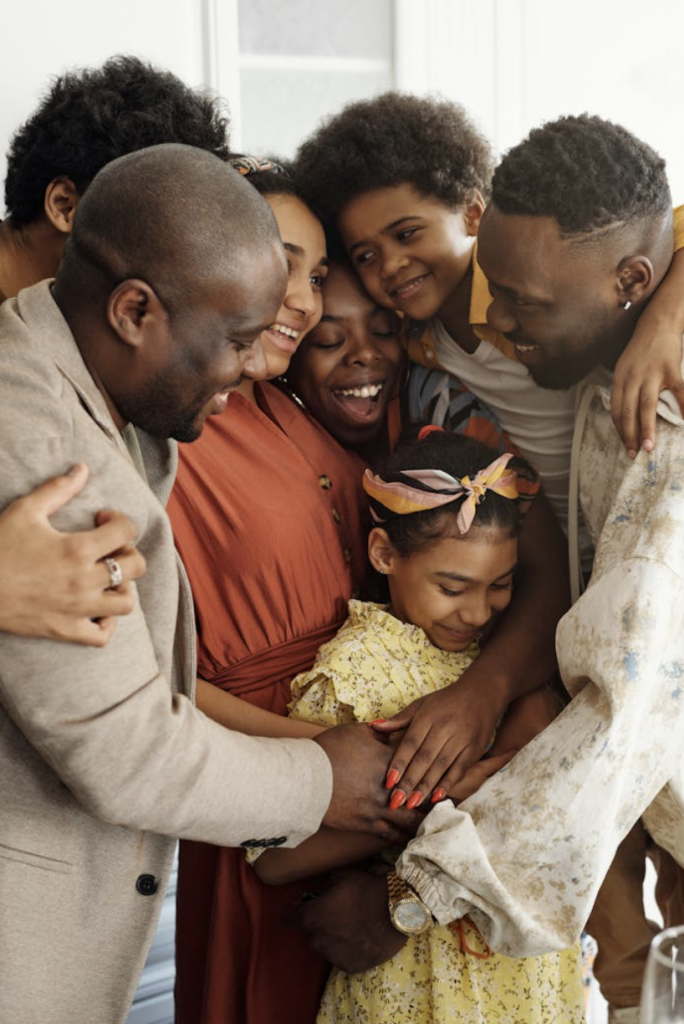Building a stronger family bonds represents a transformative investment that shapes not only immediate family harmony but also the emotional blueprint that family members carry throughout their lives. Contemporary family psychology research demonstrates that households characterized by intentional relationship building produce individuals with enhanced emotional resilience, superior conflict resolution skills, and greater life satisfaction across generations. Creating these profound connections requires understanding the sophisticated interplay between neurobiological development, environmental design, and conscious relationship practices that foster authentic intimacy and mutual growth.
Read more: How to Build Stronger Family Bonds: Creating Lasting Connections at HomeFamily Psychology Research – Zero to Three
Connection and Bonding: The Neuroscience of Family

Modern neuroscience reveals that family bonding operates as a complex neurobiological process where repeated positive interactions literally rewire brain architecture for enhanced emotional regulation and social competence. When families engage in meaningful connection activities, they trigger cascades of oxytocin and dopamine that strengthen neural pathways associated with trust, empathy, and cooperative behavior. These biochemical responses become more robust over time, creating self-reinforcing cycles of positive family interaction.
Mirror neuron research demonstrates how family members unconsciously synchronize emotional states, making the overall family emotional climate a powerful determinant of individual well-being. Children who experience consistent emotional attunement from family members develop superior emotional intelligence and stress management capabilities that serve them throughout life. This biological foundation emphasizes why intentional family bonding practices produce such lasting developmental benefits.
The concept of “emotional co-regulation” illustrates how family members learn to manage their internal states through supportive relationships with others. When parents remain calm during children’s emotional storms, they provide external regulation that children gradually internalize as self-management skills. This process extends beyond childhood, with family bonds continuing to serve as emotional resources during adult challenges and transitions.
Read more: How to Build Stronger Family Bonds: Creating Lasting Connections at HomeIncredible Alphabet Teaching Secrets That Transform Babies Into Early Readers
Mirror Neuron Research – American Psychological Association (APA)
Stronger Family Bonds: Deeper Connection, Advanced Communication Strategies

Effective family bonding requires sophisticated communication approaches that movebeyond superficial interaction to create genuine emotional intimacy. Implement “emotional attunement protocols” that help family members recognize and respond sensitively to each other’s emotional states. This involves developing skills in reading nonverbal cues, understanding individual communication preferences, and creating safe spaces for vulnerable expression.
Develop “perspective-taking practices” that help family members understand situations from each other’s viewpoints. This includes regular family meetings where members share their experiences, challenges, and perspectives without immediate problem resolution or judgment. These structured conversations build empathy while teaching valuable listening skills that strengthen all family relationships.
Practice “repair and reconnection rituals” that address inevitable relationship ruptures with intentionality and grace. When conflicts or misunderstandings occur, families with strong bonds have established processes for acknowledging hurt, taking responsibility, and restoring connection. These practices teach resilience while demonstrating that relationships can withstand and grow through difficulties.
Read more: How to Build Stronger Family Bonds: Creating Lasting Connections at HomeIncredible Revolutionary Color and Shape Recognition Techniques That Boost Baby Intelligence
Creating Meaningful Traditions and Shared Experiences
Strong family bonds develop through accumulated shared experiences that create unique family identity and belonging. Design “tradition creation frameworks” that involve all family members in establishing rituals that reflect family values and support individual growth. These might include weekly family meetings, seasonal celebrations, or adventure traditions that create anticipation and lasting memories.
Implement “experience diversity strategies” that expose family members to novel situations together. Research shows that shared challenges and new experiences create stronger emotional bonds than routine activities. This might involve family volunteer projects, learning new skills together, or exploring different cultural experiences that broaden perspectives while strengthening relationships.
Create “storytelling traditions” that help family members understand their place in the larger family narrative. Regular sharing of family history, overcome challenges, and personal growth stories provides meaning and continuity that transcends temporary difficulties. These narratives become particularly powerful during adolescence when identity formation benefits from understanding family legacy and values.
Read more: How to Build Stronger Family Bonds: Creating Lasting Connections at HomeNanny Walking Methods: 4 Powerful Walking Techniques to Boost Baby Confidence
Environmental Design for Natural Connection

The physical spaces families inhabit significantly influence their capacity for bonding and emotional intimacy. Apply “relationship-centered design principles” that create environments naturally conducive to conversation, collaboration, and relaxation. This includes gathering spaces that accommodate different group sizes, technology-free zones that encourage face-to-face interaction, and flexible areas that can support various family activities.
Develop “sensory comfort strategies” that ensure all family members feel physically at ease in shared spaces. This involves considering lighting that supports different activities, acoustic design that enables easy conversation, and furniture arrangements that promote eye contact and inclusion. When family members feel physically comfortable, they’re more available for emotional connection.
Implement “memory creation spaces” that display family photos, achievements, and mementos that reinforce family identity and shared history. These visual reminders of positive experiences and growth serve as constant reinforcement of family bonds while providing conversation starters and reflection opportunities.
Read more: How to Build Stronger Family Bonds: Creating Lasting Connections at HomeAmazing Number and Counting Methods That Make Toddler Math Genius
Conflict Transformation and Resilience Building

Strong family bonds are not characterized by the absence of conflict but by the family’s capacity to navigate disagreements in ways that ultimately strengthen relationships. Develop “conflict transformation skills” that view disagreements as opportunities for deeper understanding and growth. This includes teaching family members to identify underlying needs, practice active listening during heated moments, and collaborate on solutions that honor everyone’s core concerns.
Practice “emotional regulation techniques” that help family members manage intense emotions during challenging interactions. This might include breathing exercises, taking breaks when needed, and using “I” statements that express feelings without blame. When family members can remain emotionally regulated during difficulties, they model crucial life skills while maintaining relationship connection.
Create “recovery and growth protocols” that help families learn from difficult experiences and emerge stronger. This includes regular reflection on family challenges, celebration of growth and learning, and adjustment of family practices based on evolving needs and circumstances.
Read more: How to Build Stronger Family Bonds: Creating Lasting Connections at HomeEmotional Regulation in Families – NAEYC
CONCLUSION:
Strong family bonds are an investment in long-term well-being and happiness. By implementing these integrated strategies, you create an environment that not only functions harmoniously but also supports the emotional growth and development of each family member through authentic, lasting connections. Remember that perfection isn’t the goal authenticity, consistency, and unconditional love are the foundations of family relationships that withstand the test of time. Start with small, intentional changes and watch as your family connections deepen and flourish.

